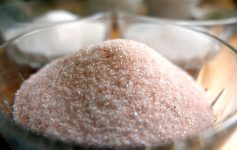After just
returning from my training on immune health in Arizona, I am dazzled by how
this complex system can be so simply modulated by lifestyle choices. In my
homepage blog, I discussed two scenarios in determining if your immune system
will act as a friend or foe.
In this
blog, I want to focus on the power of different components of food to
powerfully support our defense and repair system.
Flavonoids, Insulin, and
Inflammation, Oh MY
One study
sought out to determine if potent plant constituents that are important for
their growth, development, and reproduction also have benefits on human health.
Specifically, flavonoid subclasses, which are found in foods such as (organic)
dark chocolate, wine, green tea, and berries, were tested to see if they had an
effect on insulin resistance and its inflammatory associations.
This was a
cross-sectional study of 1997 females aged 18-76 years. The total intake of flavonoids and their subclasses
(flavanones, anthocyanins, flavan-3-ols, polymeric flavonoids, flavonols,
flavones) were calculated from dietary questionnaires and resulting fasting serum
glucose, insulin, high-sensitivity C-reactive protein (hs-CRP), plasminogen
activator inhibitor-1 , and adiponectin levels were measured.
The authors
noted the following associations (note, correlation does not prove causation):
1. High anthocyanin
and flavone intake was linked to significantly lower peripheral insulin
resistance as a result of a decrease in insulin concentrations.
2. Higher
anthocyanin consumption was also associated with lower hs-CRP concentrations (a
measure of inflammation).
3. Women
who ate the most flavones had improved adiponectin concentrations (a hormone
that plays a role in glucose and fatty acid metabolism).
According
to one of the authors,
“We found that those who
consumed plenty of anthocyanins and flavones had lower insulin resistance. High
insulin resistance is associated with Type 2 diabetes, so what we are seeing is
that people who eat foods rich in these two compounds – such as berries, herbs,
red grapes, wine- are less likely to develop the disease,” Dr. Cassidy reported.
(Holistic Primary Care UpShots, January 30, 2014)
Sources:
Jennings,
A, Welch, A, Spector, T, Macgregor, A, & Cassidey, A. Intakes of
Anthocyanins and Flavones Are Associated with Biomarkers of Insulin Resistance
and Inflammation in Women. J. Nutr. February 1, 2014; 144 (2):202-208. doi:
10.3945/jn.113.184358Gulland, J.
Preventing Diabetes with Food: Flavonoid-Rich Fruits Cut Risk. Holistic Primary
Care: UpShots. January 30, 2014; 21:35.
The Power of the Omega (Fish Oil)
A large,
long-term population-based study from Finland, The Kuopio Ischaemic Heart
Disease Risk Factor (KIHD) Study, is an ongoing prospective cohort study that
began in 1984. The first five years were used as a baseline for comparison. Following
establishment of the baseline, the study has conducted examinations for 4, 11,
and 20 year follow ups with approximately 1,000-1,800 participants. The
intended purpose of the KIHD study was to investigate risk factors for cardiovascular
health related outcomes for this Finish middle-aged men population. This is a
population with one of the highest recorded rates of CHD (cardiovascular heart
disease).
Here are
some of the results based on dietary recall in this prospective study:
1. Men who
consume more than 5 grams of marine omega-3 fatty acids per day had 33% lowered
risk of type 2 diabetes compared with men who consume 3.6 grams or less. (1, 2)
2. The
benefits of high fiber intake had a positive effect on all causes of death from
cardiovascular disease. (3, 4)
3. The role
of folate on cardiovascular outcomes may be beneficial. (The authors used serum
folate, which can be an unreliable measurement). (5)
4. Levels
of omega 3 fatty acids from fish oil were associated with lower risk of heart
attack.
5. Men with
lower glycemic diets had a lower outcome of heart attack.
Sources:
1. West,
August. High Omega-3 Intake Cuts Diabetes Risk By One-Third. Holistic Primary
Care: UpShots. January 30, 2014; 21:25.2. University
of Eastern Finland. The Kuopio
Ischaemic Heart Disease Risk Factor (KIHD) Study.https://www.uef.fi/en/nutritionepidemiologists.khid.Accessed
January 31, 2014.3. Vanharanta
M, Voutilainen S, Rissanen TH, Adlercreutz H, Salonen JT. Risk of
Cardiovascular and All-Cause Death According to Serum Concentrations of
Enterolactone: Kuopio Ischaemic Heart Disease Risk Factor Study. Archives of Internal Medicine. 2003; 163:1099-1104.4. Vanharanta
M, Voutilainen S, Lakka TA, van der Lee M, Adlercreutz H, Salonen JT. Reduced
risk of acute coronary events at high levels of mammalian lignan,
enterolactone: a prospective population-based cohort study. Lancet
1999;354:2112-2115.5. Voutilainen
S, Rissanen T, Virtanen J, Lakka TA, Salonen JTS. Low folate intakes are
associated with an excess risk of acute coronary events: the Kuopio Ischaemic
Heart Disease Risk Factor Study. Circulation. 2001; 103-2674-2680.6. Rissanen
T, Voutilainen S, Nyyssönen K, Lakka TA, Salonen JT. Fish oil derived fatty
acids, docosahexaenoic acid and docosapentaenoic acid and the risk of acute
coronary events: the Kuopio Ischaemic Risk Factor Study. Circulation
2000;102 2677-2679.7. Mursu J,
Virtanen JK, Rissanen TH, Tuomainen T-P, Nykänen I, Laukkanen JA, Kortelainen
R, Voutilainen S. Glycemic Index, Glycemic Load, and the Risk of Acute
Myocardial Infarction in Middle-Aged Finnish Men: the Kuopio Ischaemic Heart
Disease Risk factor Study. Nutr Metab Cardiovasc Dis 2011;21:144-9.
Oregano and Immune Health
I can’t do a blog on the power of food without including one of my favorite
spice essential oils. I came across a great article on five of the top health
benefits of oregano. I used it as an outline to share with you on some of the
benefits of this popular herb.
1. Antioxidant
Support
An interesting study showed that spices added to cooked hamburger meat
had potent antioxidant protection from malondialdehyde, a byproduct of meat
oxidation.
One active
agent in oregano is rosmarinic acid, which is a strong antioxidant that may
support immune function. It’s been said that intake of herbs (and oils) are
even better sources of dietary antioxidants than foods, which are potent in
themselves (see above).
2. Anti-critter
and MRSA Protection
The two
phytochemicals, Carvacol and thymol, act as potent antimicrobials. Research
shows they may kill the Listeria
(a foodborne bacteria), candida species (a fungus), and the methicillin
resistant staph infections.
3.
Anti-inflammatory Effects
Beta-caryophyllin (E-BCP), a substance found in oregano, has been shown to be anti-inflammatory.
4. Upper
Respiratory Infections Relief
Generally,
the higher the carvacrol concentration, the more effective oregano tends to be
in its immune power against respiratory infections. Oregano can also help you
expel phlegm in your lungs.
5.
Cancer-Fighting Effects
A diterpene
phytochemical in oregano, carnosol, has shown promise for its anti-cancer
property in prostate, breast, skin, leukemia, and colon cancer. Possible
mechanisms include modulating inflammation, hormones, assisting with
detoxification (including glutathione production), promoting cell arrest, and modulating
cancer cell death.
Sources:
Mercola, J.
What Are the Health Benefits of
Oregano? mercola.com.February 01, 2014.Nordqvist, J. What Are the Health Benefits of Oregano? Medpage Today.
October 15, 2013.Zhaopig, Li, et al. Antioxidant-rich spice added to hamburger meat during
cooking results in reduced meat, plasma, and urine malondialdehyde
concentrations. Am J Clin Nutr. May 2010. doi: 10.3945/ajcn.2009.28526.Dahiya, P & Purkayastha, S. Phytochemical Screening and Antimicrobial
Activity of Some Medicinal Plants Against Multi-drug Resistant Bacteria from
Clinical Isolates. Indian J Pharm Sci. 2012 Sep-Oct; 74(5): 443-450. doi: 10.4103/0250-474X.108420,Johnson, J. Carnosol: A promising anti-cancer and anti-inflammatory
agent. Cancer Lett. 2011 June 1; 305(1): 1-7.
As you can see, as complex as the biochemistry of the immune system is,
making the conscious choice to use herbs, eat berries, and take fish oil, is
simply profound.


